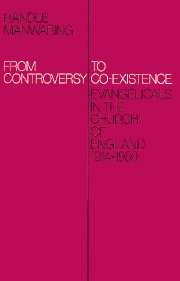Book contents
- Frontmatter
- Contents
- Acknowledgements
- Preface
- 1 Into battle
- 2 The defensive years
- 3 Through the Waste Land
- 4 Continuing nadir
- 5 The turning tide
- 6 Towards the conversion of many
- 7 Flood-tide of Evangelism
- 8 Anatomy of Evangelicalism
- 9 The Fundamentalist issue
- 10 The hard facts of Evangelicals and unity
- 11 The Honest to God debate
- 12 Liturgical debates
- 13 Charismatic differences
- 14 Keele – a watershed
- 15 Evangelical identity – a problem
- Notes
- Index
8 - Anatomy of Evangelicalism
Published online by Cambridge University Press: 18 September 2009
- Frontmatter
- Contents
- Acknowledgements
- Preface
- 1 Into battle
- 2 The defensive years
- 3 Through the Waste Land
- 4 Continuing nadir
- 5 The turning tide
- 6 Towards the conversion of many
- 7 Flood-tide of Evangelism
- 8 Anatomy of Evangelicalism
- 9 The Fundamentalist issue
- 10 The hard facts of Evangelicals and unity
- 11 The Honest to God debate
- 12 Liturgical debates
- 13 Charismatic differences
- 14 Keele – a watershed
- 15 Evangelical identity – a problem
- Notes
- Index
Summary
Years ago, the Anglican Church was described as the Conservative Party at prayer and it is still true that Christianity, as a whole, has been almost entirely restricted to the middle class and, within the social spectrum of that class bracket, Anglicans would occupy the top of the colour band and the Salvation Army the lower end, with its influence overflowing into the very poorest classes. Next to the Anglicans but socially hardly distinguishable, would be the United Reformed Church and the Methodists and, after that, the Baptists and the Brethren. All four free church groupings have, however, strong upper-middle-class elements although in no case would they be so numerous as in Anglicanism. A little lower, shouldering the Salvationists and after the main body of Free Churchmen, we find the Pentecostalists and the Jehovah's Witnesses. These generalisations, as indeed they are, inevitably throw up local anomalies such as the Baptist Church at Sutton, Surrey or the U.R.C. at Eastbourne or the Brethren Church at Carshalton Beeches, Surrey, all of which would fall into a relatively high socio-economic grouping. But Evangelical Anglicans, around the top of the social spectrum, are mainly ‘white collar’ and, sadly, one would not find many ‘blue collars’, as one once did, in Methodism.
- Type
- Chapter
- Information
- From Controversy to Co-ExistenceEvangelicals in the Church of England 1914–1980, pp. 96 - 111Publisher: Cambridge University PressPrint publication year: 1985



